Planetary Health
The impact of climate change on our planet is the number one health emergency for all living things.
Pollution from human and industrial waste is devastating the health of our planet.
All clinicians should be aware of these issues, the impact they have on our planet and our health, and what we can do to make a difference.
I hope these art resources provide a useful catalyst to improve your knowledge.
Let’s start with Luke Jerram’s artwork, Gaia.
The artwork was created with images from NASA. It is 1.8 million times smaller than the real Earth and if you stand 211m away from the artwork, you will be able to see the Earth as it appears from the moon. The project recreates the visual experience of the crew of the NASA Apollo 8 mission.
‘At this moment in 1968, our perception and understanding of our planet changed forever, hanging in the black emptiness of space the Earth seems isolated, a precious and fragile island of life.’
‘I hope visitors to Gaia get to see the Earth as if from space; an incredibly beautiful and precious place. An ecosystem we urgently need to look after – our only home.’ Luke Jerram
Have you ever stopped to think about your relationship with the planet? Why not do it now, while you are watching this video.
What message is the Ethiopian artist Aida Muluneh communicating in her picture? You can read more about her work and what motivates her to create images that raise awareness of the plight of access to water on her website.

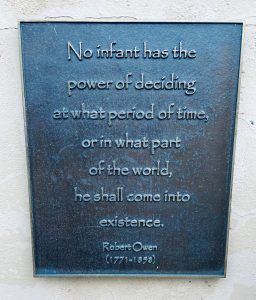
Robert Owen (1771-1858)was a social philanthropist who believed in education, opportunity and equality.
What do you think of his words in relation to planetary health?
It is the next generation who will suffer the greatest impact of climate change. What are your thoughts about this?
The impact will also be on the indigenous peoples in underdeveloped countries who have contributed least to climate change and who are least able to manage the changes that occur.
This group of young people created a poster from the waste they found on their shore, it was displayed alongside 35 other posters in an international exhibition raising awareness about plastic pollution in the oceans.
Experts usually rely on science to provide evidence for climate change, but art can contribute too.
The website – Vanishing Ice – contrasts paintings of artic scenes from the 18th and 19th Centuries with modern-day photographs and provides evidence of the impact of global warming on the arctic ice masses.
The art of Olafur Eliasson, shows the destructive force of man taking precedence over nature.
How many ways can climate change impact on the health of our planet and it’s inhabitants?
This is not an exhaustive list but should guide your thinking
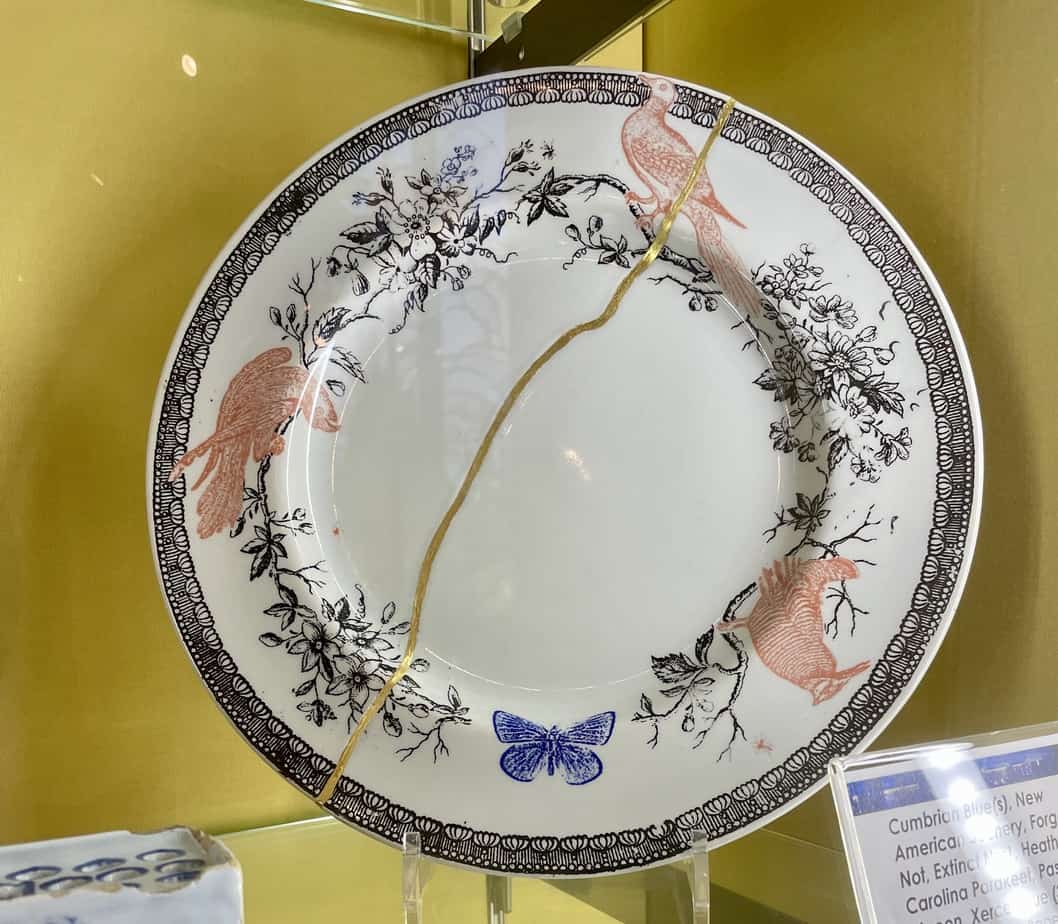
Loss of Species
This plate depicts the impact of human behaviour on native wildlife in America. The images are of creatures that are now extinct: Carolina Parakeet, Passenger Pidgeon, Health Hen. Xerxes Blue. The plate is mended with the Japanese craft of Kintsugi. I've interpreted this as meaning - it's relatively easy to mend something that is man-made but it's not possible to bring back the beautiful species of the natural world that have become extinct due to human activity. Maybe you interpret this differently?
Plate by Paul Scott Bowes Museum (own picture)
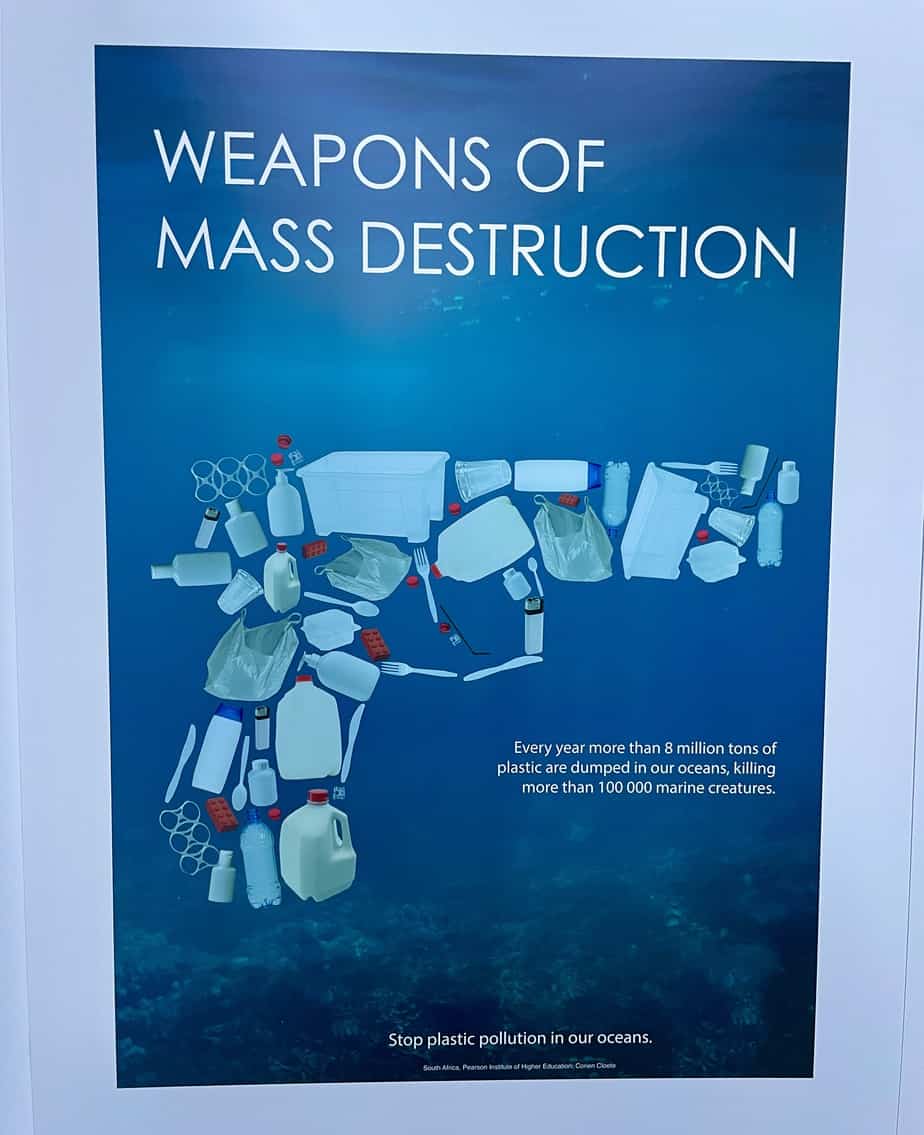
Impact on Marine Life
What does this poster show?
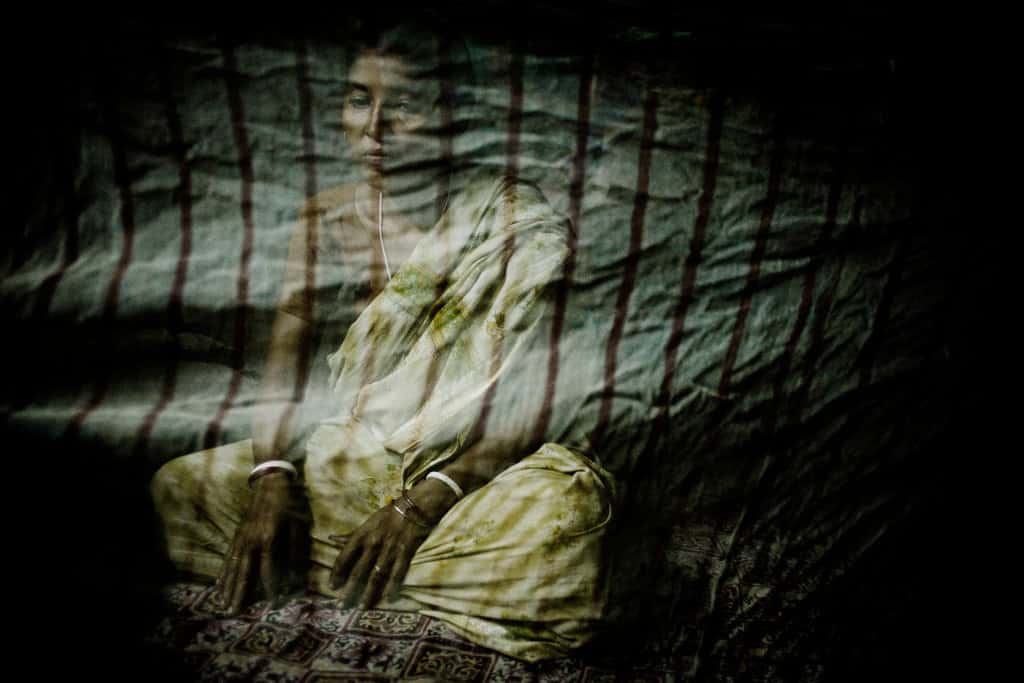
Increase in infectious diseases
35-year-old Kajal Jana has four children and lives in Basanti Colony, West Bengal. Her family is part of the population at increased risk from malaria as she lives in a slum area and uses only one old and untreated mosquito net for her family of six. What other infectious diseases are increasing? Is this just a developing world problem?
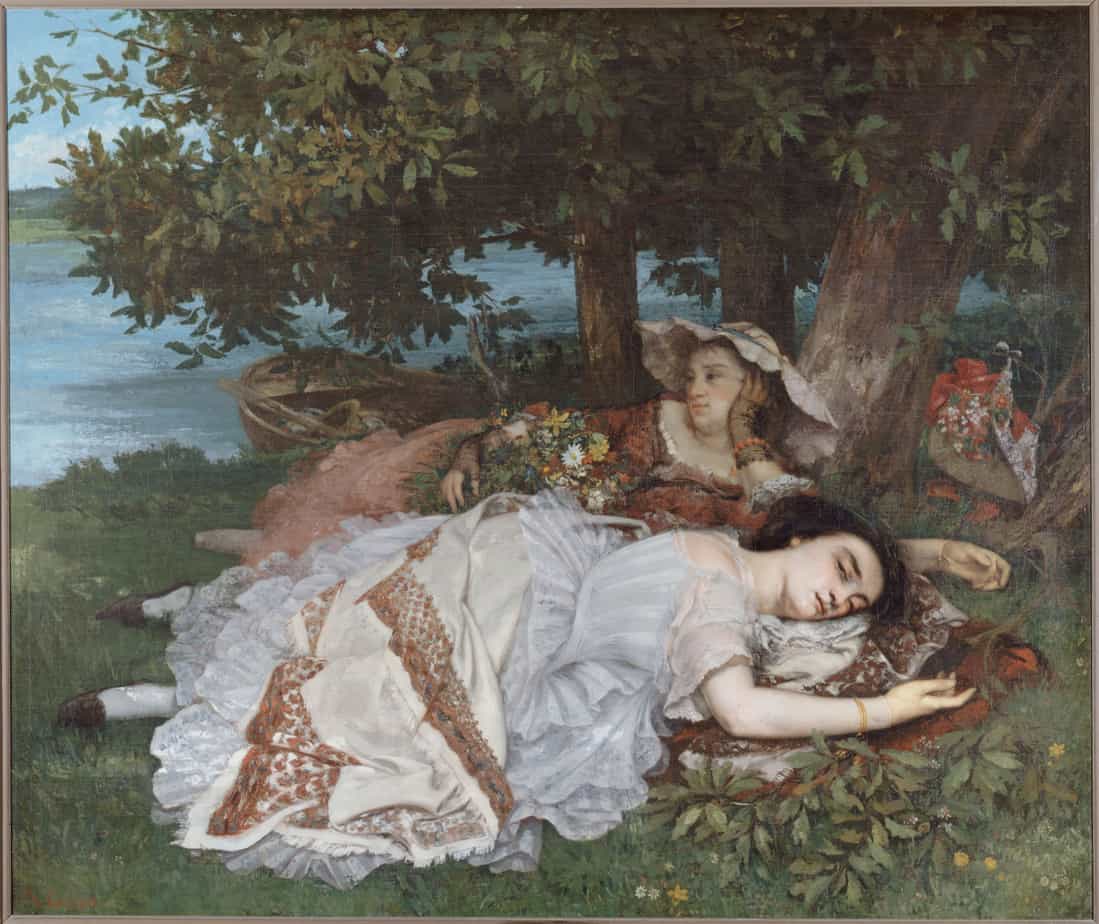
Death from heat
I've chosen this painting of rich girls reclining by the Seine in a heatwave to provoke discussion about the impact of heatwaves on the low waged, chronically ill and people who have to work outside. (Gustave Courbet Les demoiselles du bord de la Seine (été) 1857. Musée des Beaux-Arts de la Ville de Paris, Petit Palais. Image in Public Domain)
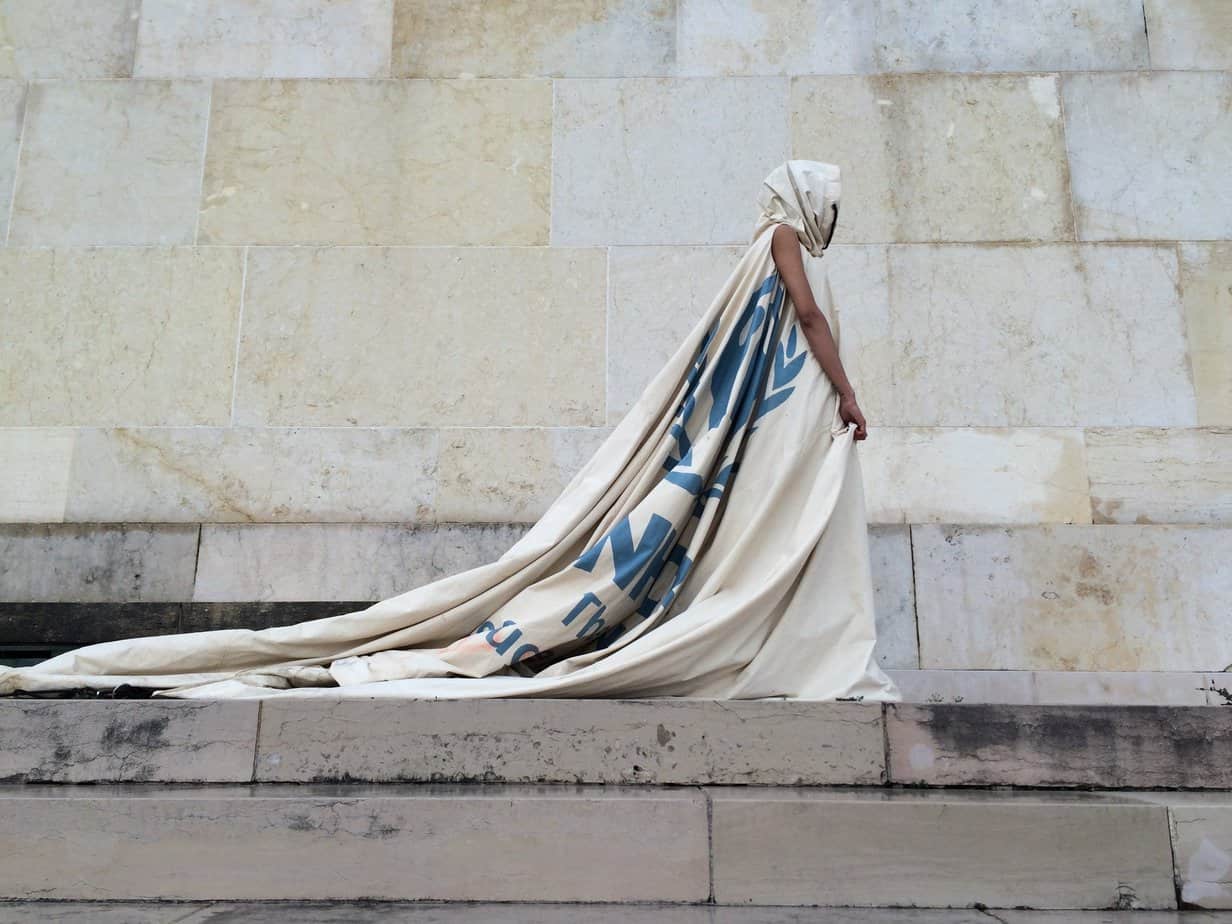
Migration
Food insecurity and food poverty are two of the reasons for the mass displacement of people, what else contributes? This dress was made by prof Helen Storey out of a UN refugee tent. She is using the power of fashion to highlight the problems faced by the mass migration of people due to climate change.
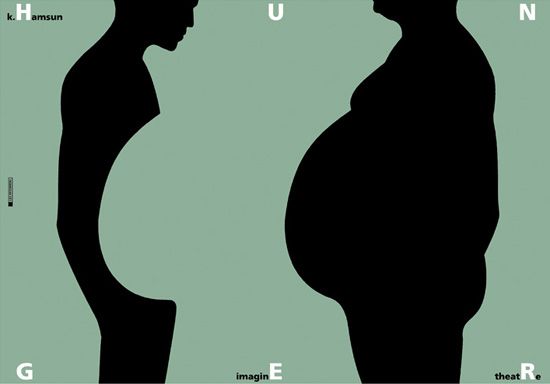
Food Poverty and Insecurity
This image is one of the 100 international posters for peace, social justice and the environment produced for ‘the graphic imperative’ exhibition at the school of art at Western Michigan University. This single picture could also be the catalyst for a tutorial on equity and world hunger
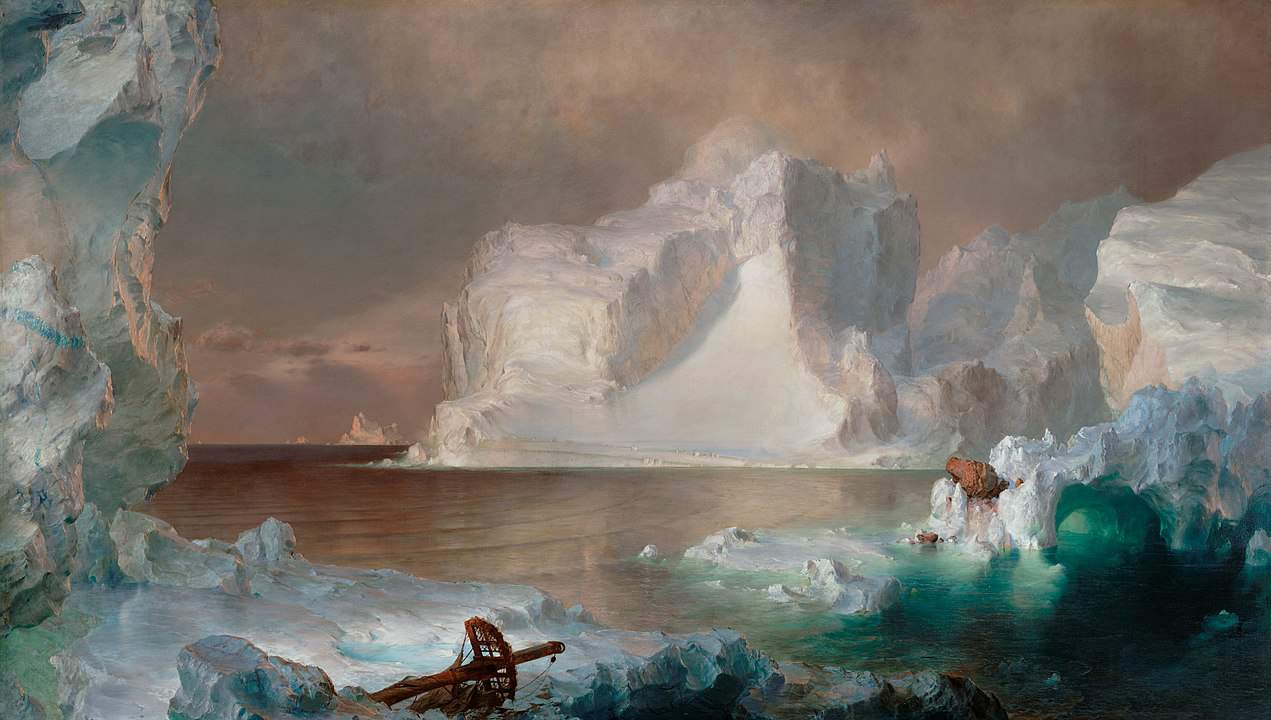
Rising Sea Levels
Evidence of climate change is captured in historical works of art. Take a look at this picture painted in 1861. In 2022 the icebergs depicted are no longer there. In the 18th and 19th centuries, art portrayed the power of nature, often contrasting this with the relative feebleness of man. The Icebergs, Frederic Edwin Church 1861 Picture in Public Domain

Air Quality
2022 has seen legal recognition of the impact of air quality on health. In test cases the official cause of death in 2 children has been recorded as due to traffic pollution and mould in the home. Image from Pinterest
Take a look at this book.
You might be wondering what nutmegs have to do with climate change.
Ghosh’s book tells the story of colonialism and how the West’s desire to trade and consume nutmeg has had an impact on climate change. Can you think of any other examples of colonialism that have had an impact on the health of our planet?
Watch this interview with the author to learn more.

What about the causes of global warming, climate change and pollution?
These often began as positive scientific discoveries that improved the quality of life of millions of people.
But then they become the cause of environmental damage, impacting the health of all living creatures.
What causes can you think of? Have you seen these represented in art?
It’s not just the things that we use to make our lives easier, it’s the quantity of these we use in our consumerist societies and the careless way in which multinational companies manufacture products, manage risky industrial processes and dispose of waste.
Take a look at this book.
You might be wondering what nutmegs have to do with climate change.
Ghosh’s book tells the story of colonialism and how the West’s desire to trade and consume nutmeg has had an impact on climate change. Can you think of any other examples of colonialism that have had an impact on the health of our planet?
Watch this interview with the author to learn more.

Is there hope?
Real hope for the future of the climate can’t come from admiring the inspirational deeds of others – it has to be earned.
Diego Arguedas Ortiz.
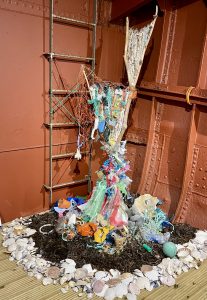
The sculpture is divided into 4 parts.
Start at the bottom and admire the natural beauty of the sea and shoreline, then move into the destruction of the plastic age, followed by a stage where society tries to organise the pollution and then finally a return to the natural order of nature and the use of natural products.
I think the message is that we should not create waste in the first place and look to more natural solutions and better management of our existing waste.
In many areas of the world, there are amazing local initiatives that have been set up to combat climate change and help endangered communities.
Watch this initiative, which saves lives while producing an installation that in the developed world might be displayed as a work of art.
What might you do?
The single most important thing you can do is to talk about climate change and planetary health. The positive choices you and your family make are important but it requires governments and multinational giant cooperation to recognise that they need to tackle this problem, your voice joined with others has power.
Take a look at the resources for clinicians to see what steps can be taken to make your practice of medicine greener.
And if you are working in primary care do join this organisation
Take a look at what local initiatives are in your area, Twitter can be a great way of connecting and finding out more.
If you are un Y&H HEE GP School then the Planetary Health Course on Blackboard has been written especially for you.
and finally
Created 2021 Inspired by COP26
Updated 2022
